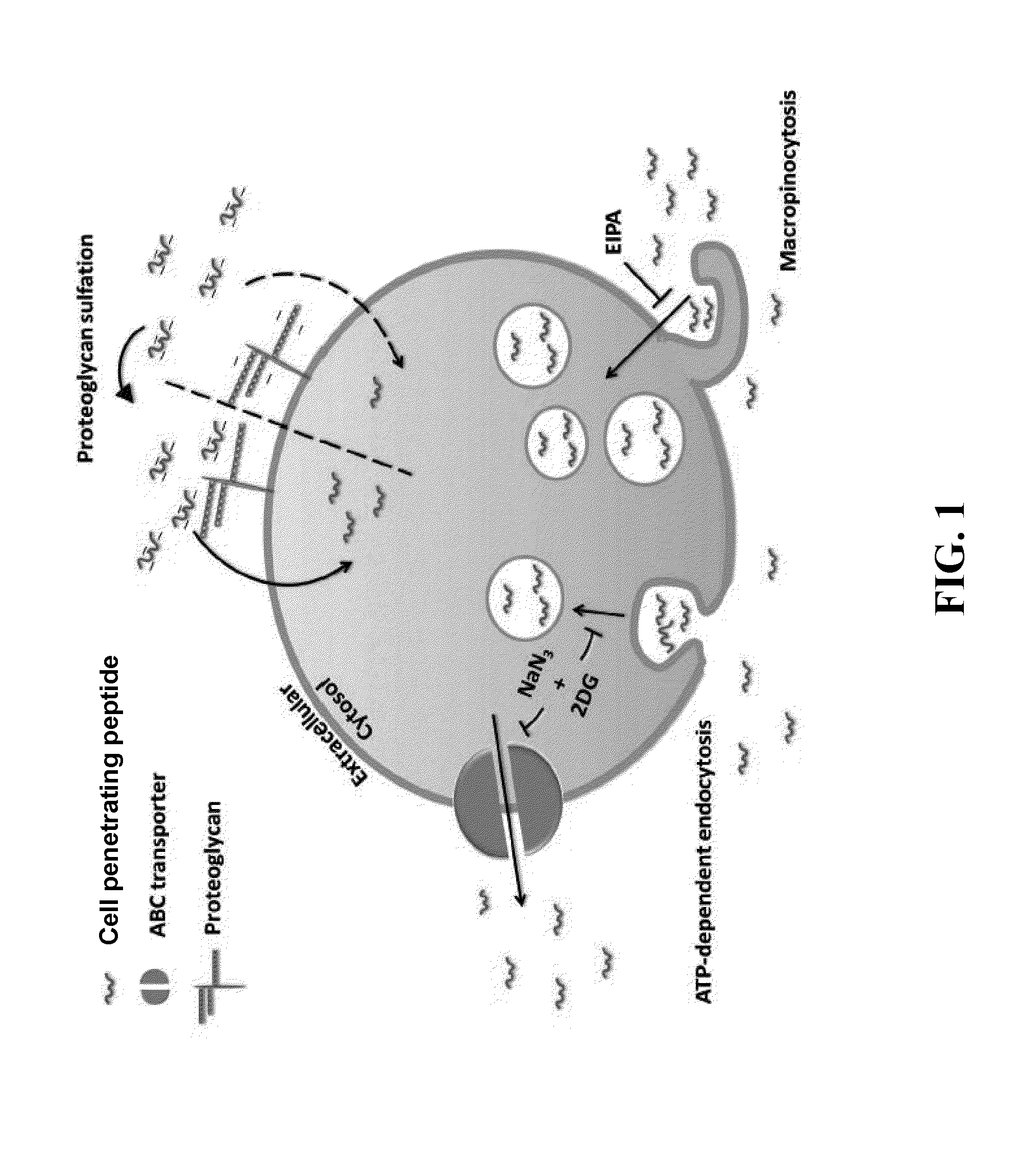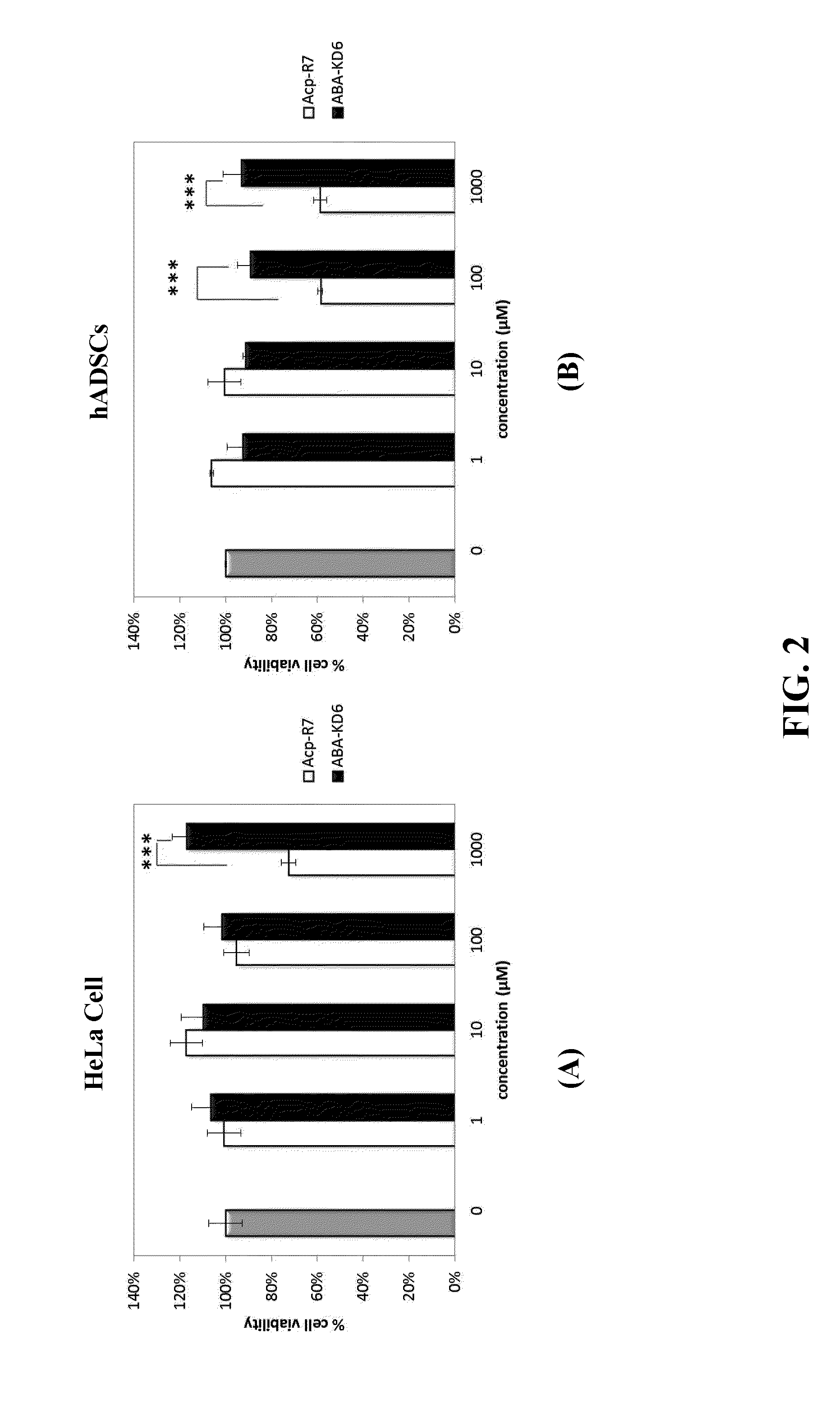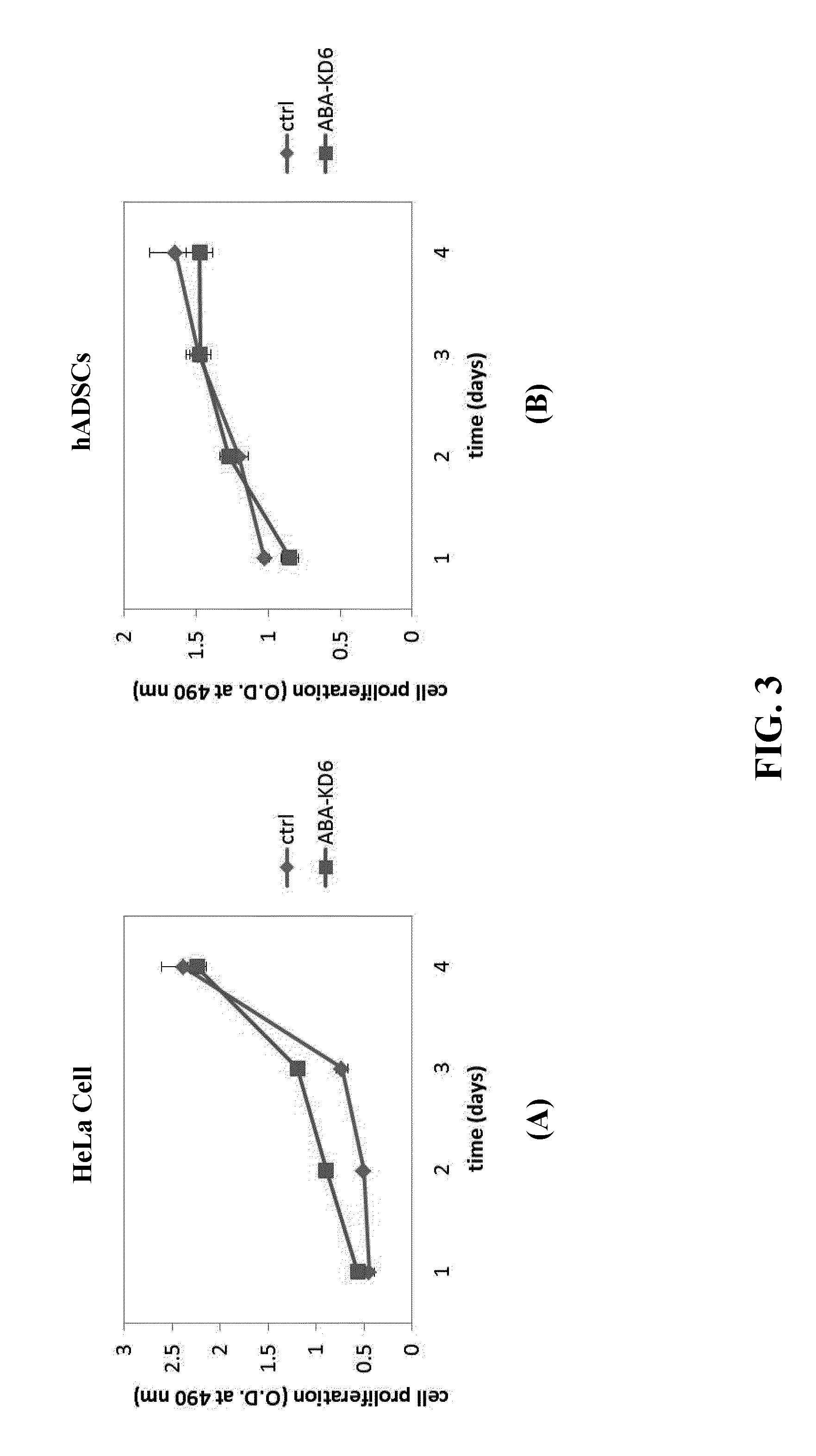Anionic cell penetrating peptide and its use for intracellular delivery
a cell penetrating peptide and cell technology, applied in the field of cell penetrating peptides, can solve the problems of limited use of cpps, cellular internalization and still difficult task of large hydrophobic therapeutic agents such as proteins or nucleic acids
- Summary
- Abstract
- Description
- Claims
- Application Information
AI Technical Summary
Benefits of technology
Problems solved by technology
Method used
Image
Examples
example 1-1
Preparation of Complex ABA-KD6
[0029]Rink amide resin (0.17 g, 0.1 mmol, load: 0.6 mmol / g) is swelled using dimethylformamide (DMF, 5 ml). Fmoc-amino acid and benzotriazol-1-yl-oxytripyrrolidinophosphonium hexafluorophosphate (PyBOP) are used at 0.4 mmol scale. Fmoc-Asp(tBu)-OH (0.4 mmol, 0.17 g) is coupled to the swelled resin following activation of PyBOP and 40% N-methylmorpholine in 3 ml DMF, and this coupling is repeated for five times. After activation of 20% piperidine in 5 ml DMF, Fmoc-Lys(ivDde)-OH is attached to the finally attached Fmoc-Asp(tBu)-OH. After deprotection of N terminal of the Fmoc-Lys(ivDde)-OH, ABA (0.4 mmol) is introduced to the Fmoc-Lys(ivDde)-OH. Finally, ivDde group is removed with reaction of 4% hydrazine, and then the remaining Fmoc-Lys(ivDde)-OH is capped by acetic anhydride or introduced with FITC. After resin cleavage using trifluoroacetic acid, the resulted solution is concentrated in vacuo. The residue is purified by an LH20 column using CH3OH as ...
example 1-2
Preparation of Complex KD6K-Simvastatin
[0030]Wang resin (0.13 g, 0.1 mmol, load: 0.79 mmole / g) is swelled using DMF (5 ml). Fmoc-amino acid and PyBOP are used at 0.4 mmol scale. Fmoc-Lys(ivDde)-OH is attached to the swelled resin, and then Fmoc group of the Fmoc-Lys(ivDde)-OH is removed after activation with 20% piperidine in 5 ml DMF. A solution of simvastatin (0.4 mmol, 0.16 g) in 10% diisopropylethylamine / DMF is introduced to the remaining Fmoc-Lys(ivDde)-OH under microwave assistance (200 W, 105° C.). After activation of 4% hydrazine / DMF, Fmoc-Asp(tBu)-OH (0.4 mmol, 0.17 g) is coupled to the remaining Fmoc-Lys(ivDde)-OH, and this coupling is repeated for five times. After activation of 20% piperidine in 5 ml DMF, Fmoc-Lys(ivDde)-OH is attached to the finally attached Fmoc-Asp(tBu)-OH. After deprotection of N terminal of the newly added Fmoc-Lys(ivDde)-OH, PEG500 (0.4 mmol, 0.23 g) is introduced to the remaining newly added Fmoc-Lys(ivDde)-OH. Finally, ivDde group of the remainin...
example 1-3
Preparation of Complex PEG-KD6
[0031]This complex is prepared by a process similar to that as described in Example 1-1, except that PEG500 (0.4 mmol, 0.23 g) is introduced to the Fmoc-Lys(ivDde)-OH after deprotection of N terminal of the Fmoc-Lys(ivDde)-OH. Retention time: 6.1 min. Yield: 17%. Mass (MALDI-TOF): found for 1846 Da ([M+K+OCH3-3H]); calcd. for 1764 Da.
PUM
| Property | Measurement | Unit |
|---|---|---|
| flow rate | aaaaa | aaaaa |
| humidity | aaaaa | aaaaa |
| humidity | aaaaa | aaaaa |
Abstract
Description
Claims
Application Information
 Login to View More
Login to View More - R&D
- Intellectual Property
- Life Sciences
- Materials
- Tech Scout
- Unparalleled Data Quality
- Higher Quality Content
- 60% Fewer Hallucinations
Browse by: Latest US Patents, China's latest patents, Technical Efficacy Thesaurus, Application Domain, Technology Topic, Popular Technical Reports.
© 2025 PatSnap. All rights reserved.Legal|Privacy policy|Modern Slavery Act Transparency Statement|Sitemap|About US| Contact US: help@patsnap.com



